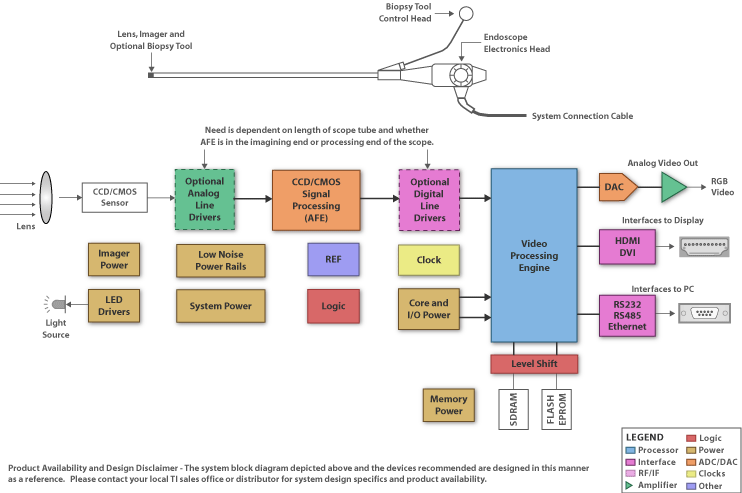We usually need to check the area inside the restricted area. In the medical field, endoscopes are used to see through the body to examine organs. The endoscope can inspect the gastrointestinal tract, respiratory tract, urinary tract, and internal organs through a small incision. The endoscope collects images through its long or tough tube. Additional instruments for cutting, grasping, and other functions are usually connected to endoscopes to perform minimally invasive surgery that can improve medical treatment and shorten recovery time. Items used for technical applications to inspect defined areas are commonly referred to as borescopes. The borescope is used to inspect the interior of machinery, building walls, and search for wounded people in collapsed buildings.
Endoscopes or borescopes have the following 4 basic requirements:
The light source that illuminates the subject;
Channels to guide light;
Lens or fiber optic system capable of collecting light reflected from the main body;
An image acquisition system capable of acquiring, processing and storing or displaying images.
TI's extensive product line supports the entire image chain: generating lights, acquiring images, signal conditioning, and image processing.
The LED driver provides a bright light source with excellent directivity and low residual heat. These drivers are versatile and allow the selection of LEDs to achieve the spectral requirements applicable to the application. The resolution of the current step affects the precision of lighting control; the 14-bit LED controller supports precise control of lighting levels and lighting timing.
The image sensor can detect the emitted light and convert the light into an analog electrical signal. The low-noise line driver needs to send the signal to the area beyond the length of the light pipe according to the position of the image sensor. The key considerations for line drivers are low power consumption, noise immunity, and data rate. LVDS technology provides 800Mbps speed, low voltage swing and high common mode noise suppression.
The analog front end (AFE) is critical to the final image quality. AFE adjusts the analog electrical signal of the sensor and converts the image information into a digital representation. Whether the signal can be adjusted to the correct sensor-induced distortion (such as dark current elimination, reset level change, defective pixel correction, and DC offset change) is an important factor in choosing AFE. The presence or absence of a programmable gain amplifier (PGA), the linearity of the PGA, and the available gain range are also important, depending on the signal level. During digitization, the number of digits will determine the contrast of the image. In general, the initial data needs to be digitized into data whose accuracy is 2 to 4 bits higher than the number of bits required for the final image. Therefore, if 8-bit final image data is required, it should initially be digitized to 10 bits to allow rounding errors during image processing. Ultimately, when the color reproduction becomes critical, the differential and integral nonlinear distortion (DNL, INL) should be minimized.
Endoscope: Illuminated optical instrument used to see through the body and examine organs such as the throat or esophagus. The endoscope can be hard or flexible.
Professional endoscopes are named after their specific viewing objects. These include examples of the following professional names: cystoscope (bladder), nephroscope (kidney), bronchoscope (bronchus), laryngoscope (larynx and larynx), otoscope (ear), arthroscopy (joint), laparoscope (abdominal cavity) , Gastrointestinal endoscopy.

Endoscope system block diagram
Multi Core Power Cable,Multi Core PVC Insulated Cable,Flexible Multi Core Power Cable,XLPE Multi Core Power Cable
Huayuan Gaoke Cable Co.,Ltd. , https://www.bjhygkcable.com
